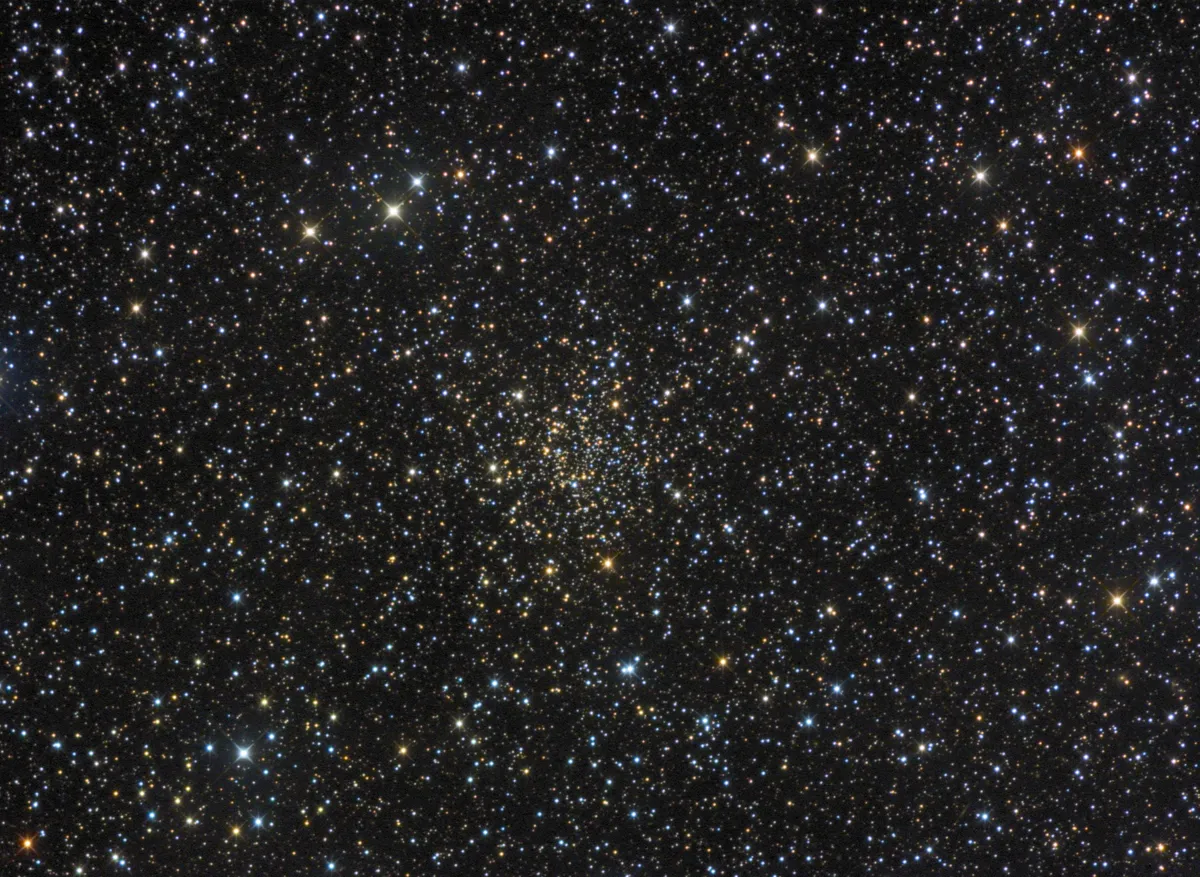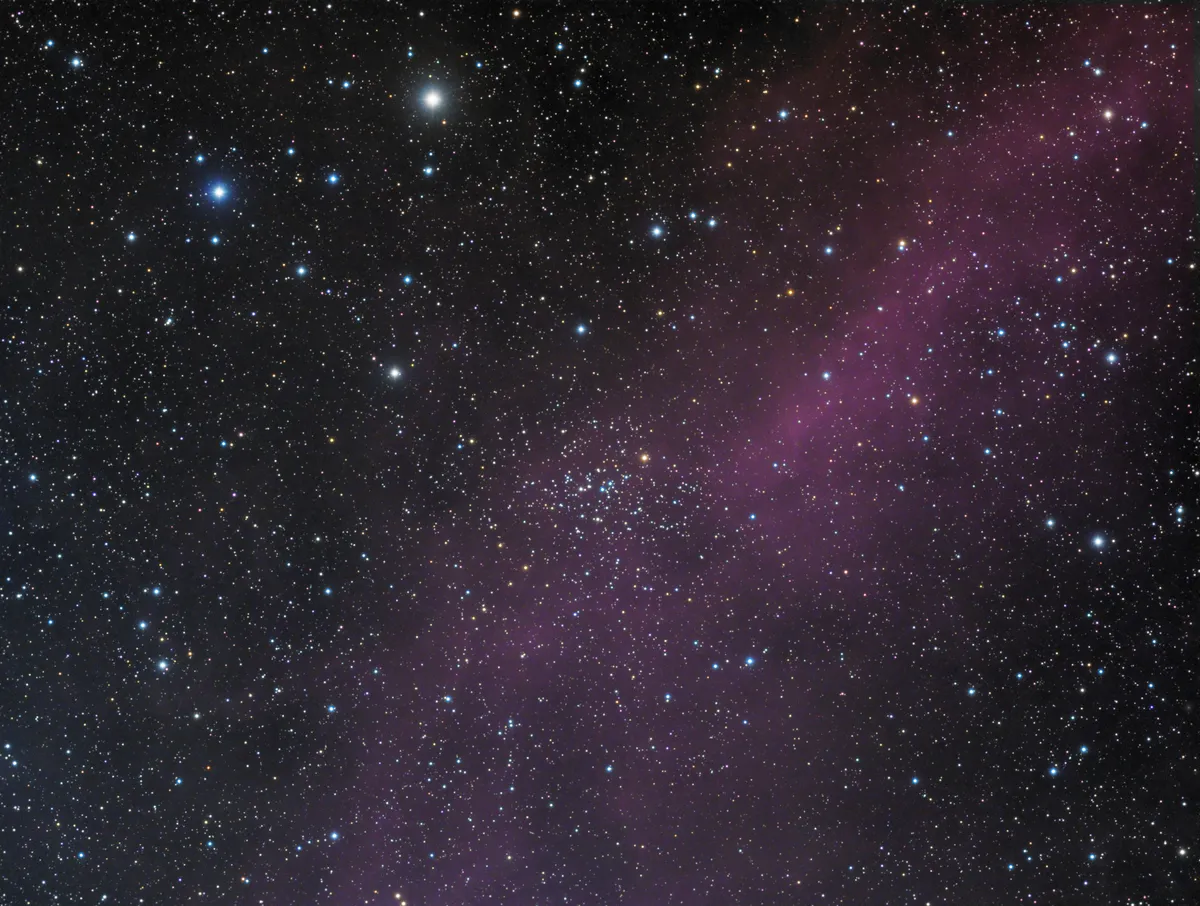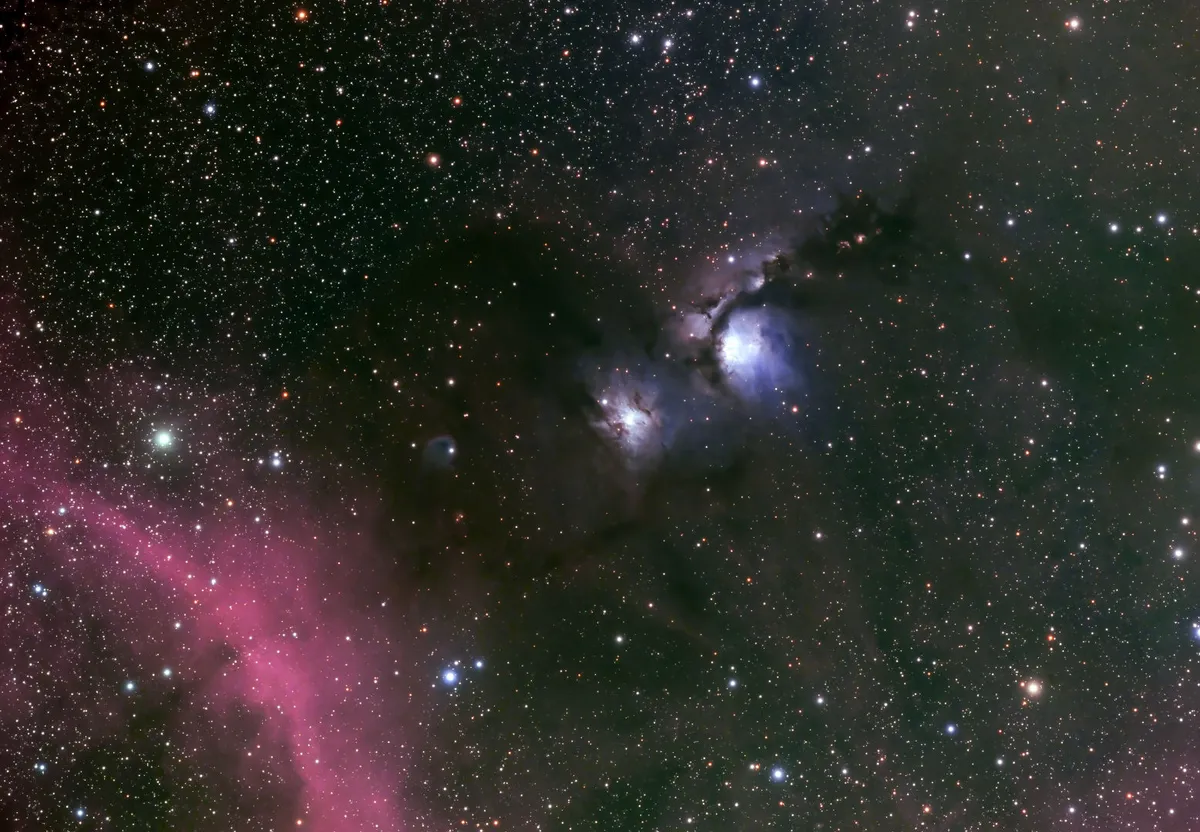Orion is one of the most famous constellations in the night sky, and a great region of the sky for spotting deep-sky objects like the Orion Nebula or the Horsehead Nebula.
We all know Orion's best deep-sky objects like its famous Trapezium star cluster, red giant Betelgeuse and Orion's Belt.
But if you've exhausted these targets this winter, perhaps you're in need of some lesser-known deep-sky objects to find in Orion.
In this short deep-sky tour we'll look at some of the less well-known objects in the eastern part of Orion, away from the glitz and spectacle of Orion’s Belt.
For help locating each target, download our lesser-known Orion targets star chart (PDF)
6 lesser-known deep-sky objects in Orion
NGC 2141

Open cluster NGC 2141 is about as far from glitzy as you can get! It’s easy to find starting from Betelgeuse (Alpha (α) Orionis). From here head 2.8° northeast to locate mag. +4.1 Mu (∝) Orionis. NGC 2141 sits 0.8° north and slightly east of this star.
It has an integrated visual magnitude of +9.4, occupying an area about 10 arcminutes across. A 150mm scope will show it, but only as a hazy glow. The stars remain unresolved until around 300mm aperture, when small patches of stars become obvious.
NGC 2112

Our next target falls into a similar category as NGC 2141. Return to Betelgeuse and head exactly south for 7.1° to arrive at the mag. +8.4 open cluster NGC 2112. This is easier to see than our previous target, a hazy glow contained within a 7-arcminute area through a 150mm scope. A few members can be resolved and there’s a brighter orange-hued mag. +10.4 star visible just to the northwest of the cluster’s centre.
Through a 250mm scope, the number of resolved members increases to over 30, the cluster boundary appearing almost twice the size at around 12 arcminutes. A 300mm scope shows around 40 stars here, the core region appearing well defined.
NGC 2071

Orion isn’t generally thought of as a showcase for dim clusters, but rather for impressively detailed nebulae like our next two objects. They have the benefit of being really close to one another, although this proximity sometimes creates confusion as to which is which. We’ll start with NGC 2071, the northernmost of the two. This is a reflection nebula 1.7° west of NGC 2112.
It shines with an integrated magnitude around mag. +8.0, but this light is spread over an area 7 x 5 arcminutes in size which results in low surface brightness. It’s visible in a 150mm scope as a faint glow around a mag. +10.1 star. A 300mm scope shows the glow offset more to the south of this star.
M78

As we mentioned, it’s common to confuse reflection nebula NGC 2071 with the easier to see reflection nebula M78, which lies 17 arcminutes to the southwest of NGC 2071. M78 is easy to see through smaller scopes and is simple to find via Orion’s Belt. Just rotate the line of the belt by 90° anti-clockwise about the eastern star Alnitak (Zeta (ζ) Orionis).
The free end rotates to the position of M78. A 150mm scope shows an oval glow about 6 x 4 arcminutes in size. Two stars appear embedded within the glow, producing an effect which is aptly described as like car headlights seen through fog. Larger instruments produce a wealth of delicate detail in and around this region.
NGC 2024

Our next target is really easy to find but quite difficult to see. NGC 2024, also known as the Flame Nebula, is a large nebulous region that covers 30 x 30 arcminutes in size but is drowned out by the light of mag. +1.8 Alnitak (Zeta (ζ) Orionis) very nearby.
A 150mm scope shows two portions to the nebula, divided from one another by a dark lane. This lane is approximately 3 arcminutes wide and 10 arcminutes long, and most distinctive at the southern end. With increased aperture and clear skies, it may be possible to make out additional branches to the main dark lane, creating an effect like the veins of a leaf, or a flickering flame.
Sharpless 2-276

Our final target is a big one. Barnard’s Loop is an emission nebula that appears as a giant ring approximately 10° across. It’s faint visually but can be picked up with a 100mm scope aided by a hydrogen-beta filter. The eastern portion is brightest, especially the arc 3.5° north-northeast of Alnitak. Use a very low-power eyepiece and allow 20 minutes for proper dark adaptation.
Start by looking at the region between mag. +4.9 51 and +4.8 56 Orionis. If you see a faint glow here, take your time and using averted vision trace it as far as you can. A large scope such as a Dobsonian is ideal for catching this region – just keep the power low!
Have you managed to track down all the lesser-known Orion targets on our list? Let us know by emailing contactus@skyatnightmagazine.com

